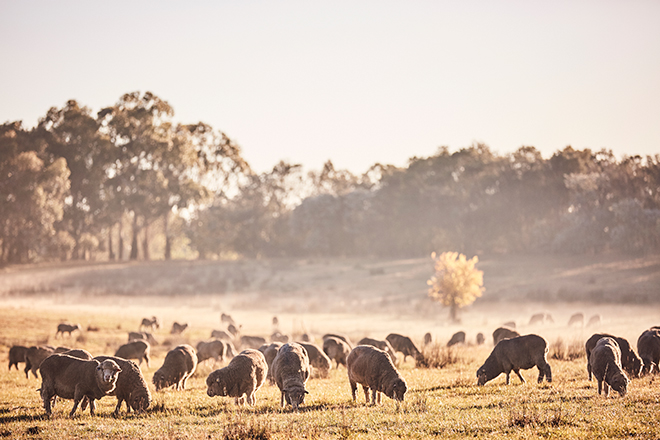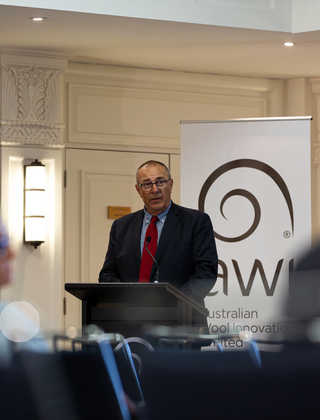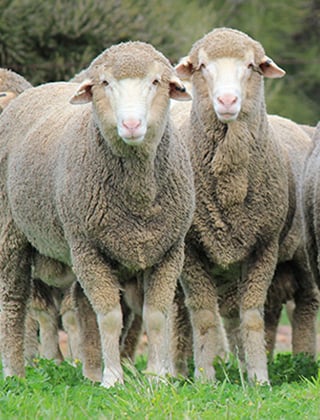The ‘why’ and ‘how’ of building on-farm natural capital

AWI has launched a double-pronged initiative to (1) demonstrate to woolgrowers the business case for improving their farms’ natural capital, and (2) provide regionally relevant pathways for woolgrowers to do so.
AWI has launched a double-pronged initiative to (1) demonstrate to woolgrowers the business case for improving their farms’ natural capital, and (2) provide regionally relevant pathways for woolgrowers to do so.
Consumers, brands and regulatory bodies are increasingly wanting evidence that farmers are responsibly managing their farm’s natural resources. Furthermore, there are market signals that they have expectations for farmers to adopt practices that actually build their farm’s natural capital; this includes regenerative practices such as sequestering carbon in soils and vegetation, and rebuilding biodiversity.
In response, and as part of a broad strategy to help Australian woolgrowers increase demand for their wool, AWI has launched two new projects to help interested producers understand the ‘why’ and the ‘how’ of building the on-farm capital of their properties.
Farming for the Future – making the business case for improving natural capital
Farming for the Future’s purpose is to provide the evidence and practical support for farmers to incorporate natural capital as part of the foundation of a profitable farming business.
AWI has joined Farming for the Future, a significant national research program initiated by the philanthropic Macdoch Foundation that is working towards a more financially prosperous, climate-resilient and decarbonising agriculture sector in Australia. The Foundation’s work is supported by other philanthropists and other industry partners including the National Farmers’ Federation and MLA.
Farming for the Future aims to establish evidence that quantifies the relationship between on-farm natural capital and farm business outcomes. Ultimately, this will help farmers to plan and manage their investments in their on-farm natural capital in a way that maximises environmental returns whilst also building resilience and profitability into their business.
Most farmers know that good management of their farm’s natural resources is critical to the long-term viability of their operations, but a more detailed understanding of the impact of increasing natural capital levels on farm enterprise performance remains largely unknown.
Farming for the Future Program Director, Dr Sue Ogilvy, says the program is designed to help farmers find a “sweet spot” between the natural resources they manage for their farm businesses and for their profitability.
“It’s believed that as farmers increase natural capital up to a certain point, their profitability or other benefits also increase. However, beyond a certain point they might decrease,” Dr Ogilvy said.
“We think that many farmers are currently what we might call ‘underinvested’ in natural capital, meaning that if they increase their natural capital – maybe by improving their soil health, maybe by changing their pasture composition and condition, maybe by investing in trees on their farms – then their profitability might improve, because they might be able to maintain production but reduce expenses or maybe increase marking rates or improve livestock performance without actually spending any more money.”
“The program aims to provide the evidence and practical support that farmers need to plan and manage their investment in natural capital in a way that maximises both environmental returns and business prosperity.”
-- Dr Sue Ogilvy, Farming for the Future Program Director
AWI’s Program Manager, Fibre Advocacy & Eco Credentials, Angus Ireland, says AWI’s involvement in Farming for the Future will ensure the participation of more woolgrowers in the program, helping ensure the findings are robust and relevant to wool-growing enterprises.
“Our participation in the Farming for the Future program seeks to provide the evidence and business case for interested Australian woolgrowers to simultaneously improve their natural capital and also meet market requirements,” Angus said.
“The program will develop supporting tools that make this evidence relevant and accessible to woolgrowers, to inform their business planning and decision making, with specific insights on biodiversity.”
The project aims to be able to share preliminary results by mid-2023.
Carbon Storage Partnership – helping farmers to improve their natural capital
The Carbon Storage Partnership aims to identify the most effective techniques for farmers across Australia to reduce greenhouse gas emissions, sequester carbon in soil and vegetation, and build biodiversity.
The Carbon Storage Partnership (CSP) is an MLA-led, multi-party initiative that is developing profitable and sustainable pathways to a carbon-neutral Australian livestock sector by 2030. The CSP work program commenced in mid-2021 and is being managed by Associate Professor Matt Harrison at the University of Tasmania, with the project team distributed across the breadth of southern Australia, thereby facilitating regional engagement.
The collaborative project is using multiple years of satellite imagery and farming system models to identify the most effective and regionally relevant techniques to reduce net farm greenhouse gas (GHG) emissions and increase biodiversity, depending on agro-ecological region, prevailing climate type and across different sheep enterprise mixes.
“The value of AWI’s involvement in the CSP will be the inclusion of wool-growing properties in the analysis and assessment,” said AWI’s Program Manager, Fibre Advocacy & Eco Credentials, Angus Ireland.
“There’s a wide variety of interventions that woolgrowers can take, from changed grazing management to carbon sequestration in soil, under legumes, and in trees and shelterbelts, etc. But there’s no ‘one size fits all’ rule – the need to customise solutions to suit different farms is clear. A farm located in a high-rainfall, summer-growing environment will need very different interventions to sequester carbon compared to a low-rainfall, winter-growing, pastoral enterprise.
“Our aim is to take as much risk out of this process for woolgrowers as we can – so they can adopt pathways that are proven to work in their environment.
“Importantly, AWI’s involvement will broaden the project’s scope from its focus on pathways to carbon storage to also include pathways to biodiversity improvement.
“Evidence will be collected on biodiversity trends over time on wool-growing properties where these interventions have been applied, helping to address a key knowledge gap for the wool industry and preparing our industry for inclusion of biodiversity indicators in environmental rating schemes such as the EU’s Product Environmental Footprint.
“Outcomes of this research program will help position the Australian wool industry as a proactive, socially-responsible and forward-looking steward of the environment.”
“The project will result in the identification and adoption of environmental practices by woolgrowers that will help brands demonstrate planet-friendly farming practices across their supply chains.”
-- Angus Ireland, AWI Program Manager
The extension of program results to farmers will be critical and is anticipated to occur through AWI’s communication channels as well as a nationally coordinated network of extension officers, farmers, grower groups, consultants, and Landcare Australia.
“Along with the channels of AWI’s marketing arm, The Woolmark Company, this will facilitate national and global awareness of the good work being done in the Australian wool industry,” Angus added.
The project is scheduled to be completed in early 2025.
This article appeared in the December 2022 edition of AWI’s Beyond the Bale magazine. Reproduction of the article is encouraged.















